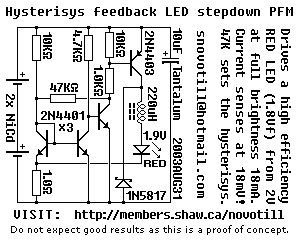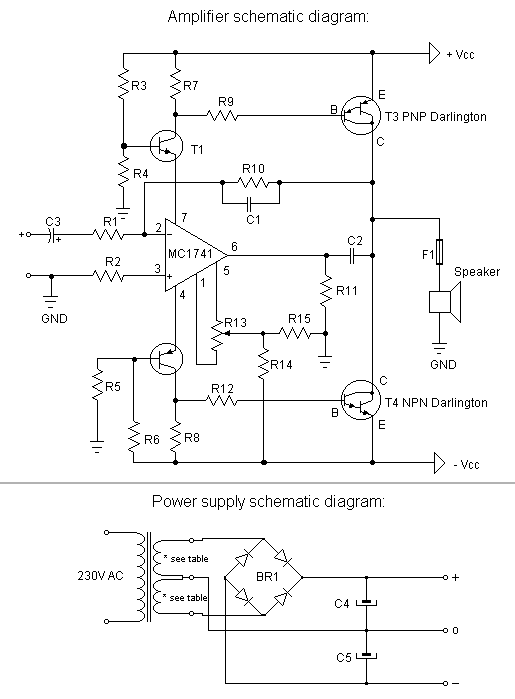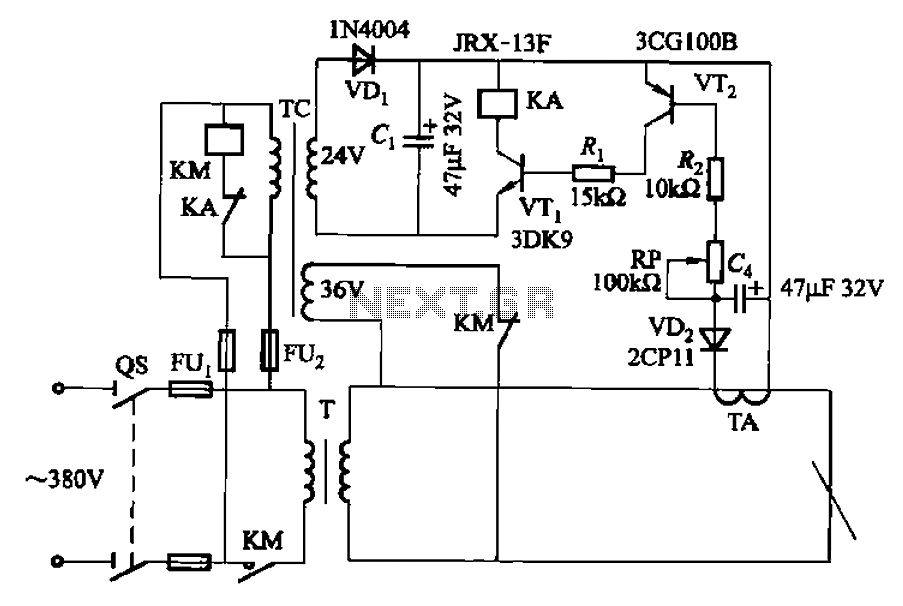
power supply (300V, 50mA + 6.3V, 3A max)
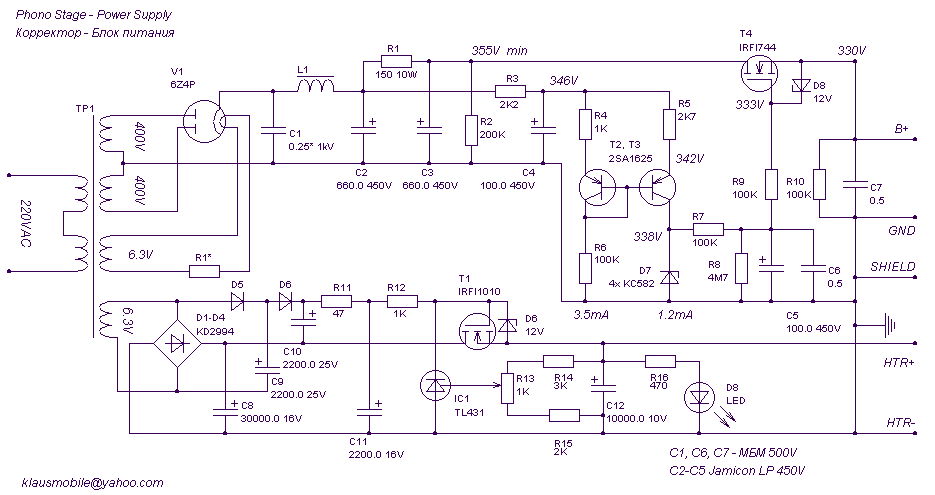
This regulated power supply was built as a simplified outboard version of a PSU in my first phono stage. Replacing hexfreds with tube rectifier eliminates the need for power-on sequencing. Chassis (salvaged from a hospital laser PSU) size is 180W*240D*100H mm with a 125W double-C core power transformer and a 10H/100mA choke inside. More: Heater and plate regulators are on the same PCB (there's only one heater regulation channel). No exotic components of any kind - a low-cost but ultra-quiet unit. There is additional 120uF of paper capacitors in the phono audio chassis (red bricks on the board).
The described regulated power supply is designed for audio applications, particularly for use with phono stages, where low noise and stable voltage are critical for sound quality. The power supply employs a tube rectifier, which is known for its smooth voltage output and minimal ripple, contributing to the overall audio fidelity. The elimination of power-on sequencing simplifies the design and enhances reliability.
The chassis dimensions of 180 mm in width, 240 mm in depth, and 100 mm in height provide a compact form factor, making it suitable for integration into various audio setups. The salvaged chassis from a hospital laser PSU indicates a focus on quality materials and construction, which can enhance the durability and performance of the power supply.
A 125W double-C core power transformer is utilized to step down the mains voltage to the required levels for audio applications. The transformer’s design allows for efficient energy transfer with reduced electromagnetic interference. The inclusion of a 10H/100mA choke further smooths out the DC output, reducing ripple and noise, which is particularly beneficial in high-fidelity audio systems.
The power supply features a single PCB that houses both the heater and plate regulators. This configuration allows for efficient thermal management and reduces the complexity of the circuit. The use of low-cost components ensures that the design remains accessible while maintaining ultra-quiet operation, which is essential for high-quality audio reproduction.
The additional 120uF of paper capacitors in the phono audio chassis serves to filter and stabilize the power supply further, ensuring that the audio signal remains clean and free from unwanted artifacts. The choice of paper capacitors is often preferred in audio applications due to their favorable characteristics in audio frequency response and low distortion.
Overall, this regulated power supply is a straightforward yet effective solution for providing stable and low-noise power to phono stages, emphasizing practicality and performance without the need for expensive components.This regulated power supply was built as a simplified outboard version of a PSU in my first phono stage. Replacing hexfreds with tube rectifier eliminates the need for power-on sequencing. Chassis (salvaged from a hospital laser PSU) size is 180W*240D*100H mm with a 125W double-C core power transformer and a 10H/100mA choke inside.
Heater and plate regulators are on a same PCB (there`s only one heater regulation channel). No exotic components of any kind - a low-cost but ultra-quiet unit. There is additional 120uF of paper capacitors in the phono audio chassis (red bricks on th 🔗 External reference
The described regulated power supply is designed for audio applications, particularly for use with phono stages, where low noise and stable voltage are critical for sound quality. The power supply employs a tube rectifier, which is known for its smooth voltage output and minimal ripple, contributing to the overall audio fidelity. The elimination of power-on sequencing simplifies the design and enhances reliability.
The chassis dimensions of 180 mm in width, 240 mm in depth, and 100 mm in height provide a compact form factor, making it suitable for integration into various audio setups. The salvaged chassis from a hospital laser PSU indicates a focus on quality materials and construction, which can enhance the durability and performance of the power supply.
A 125W double-C core power transformer is utilized to step down the mains voltage to the required levels for audio applications. The transformer’s design allows for efficient energy transfer with reduced electromagnetic interference. The inclusion of a 10H/100mA choke further smooths out the DC output, reducing ripple and noise, which is particularly beneficial in high-fidelity audio systems.
The power supply features a single PCB that houses both the heater and plate regulators. This configuration allows for efficient thermal management and reduces the complexity of the circuit. The use of low-cost components ensures that the design remains accessible while maintaining ultra-quiet operation, which is essential for high-quality audio reproduction.
The additional 120uF of paper capacitors in the phono audio chassis serves to filter and stabilize the power supply further, ensuring that the audio signal remains clean and free from unwanted artifacts. The choice of paper capacitors is often preferred in audio applications due to their favorable characteristics in audio frequency response and low distortion.
Overall, this regulated power supply is a straightforward yet effective solution for providing stable and low-noise power to phono stages, emphasizing practicality and performance without the need for expensive components.This regulated power supply was built as a simplified outboard version of a PSU in my first phono stage. Replacing hexfreds with tube rectifier eliminates the need for power-on sequencing. Chassis (salvaged from a hospital laser PSU) size is 180W*240D*100H mm with a 125W double-C core power transformer and a 10H/100mA choke inside.
Heater and plate regulators are on a same PCB (there`s only one heater regulation channel). No exotic components of any kind - a low-cost but ultra-quiet unit. There is additional 120uF of paper capacitors in the phono audio chassis (red bricks on th 🔗 External reference
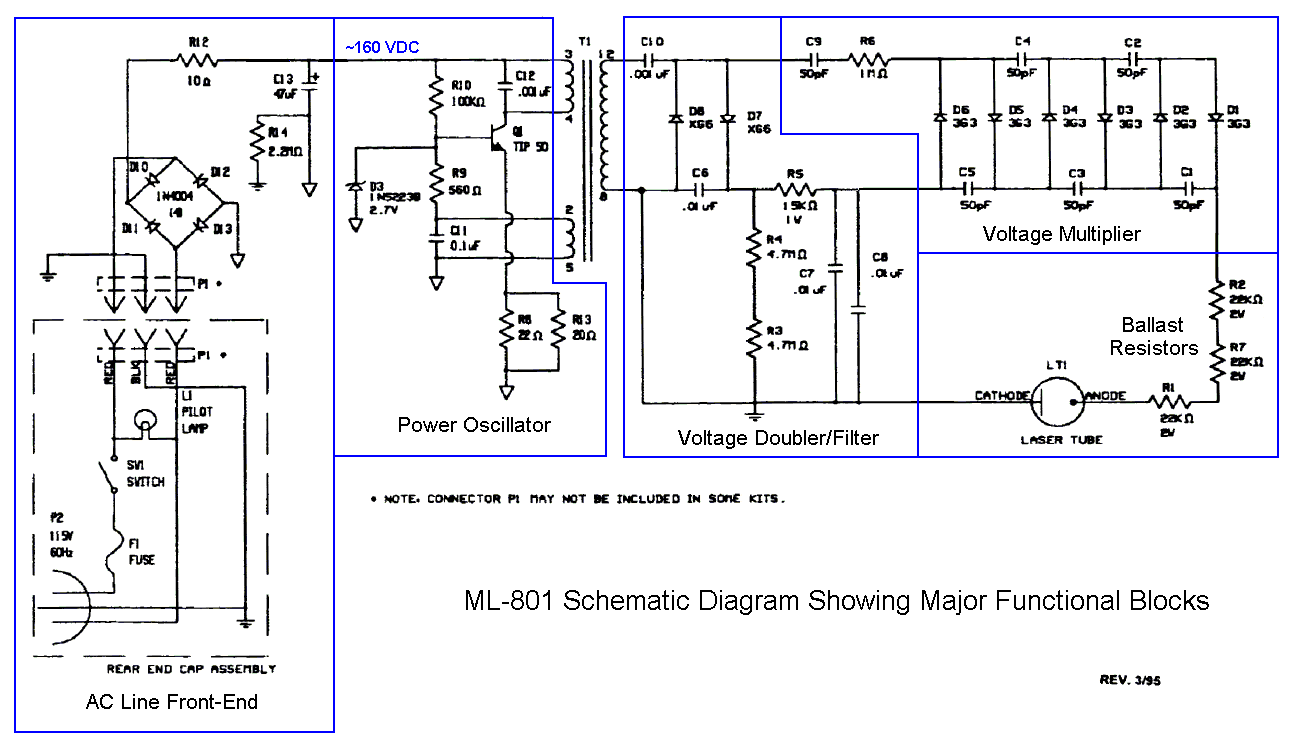
%2BCircuit%2Bdiagram%2Busing%2BCD4047%2Band%2BIRFZ44%2Bpower%2BMOSFET.png)

